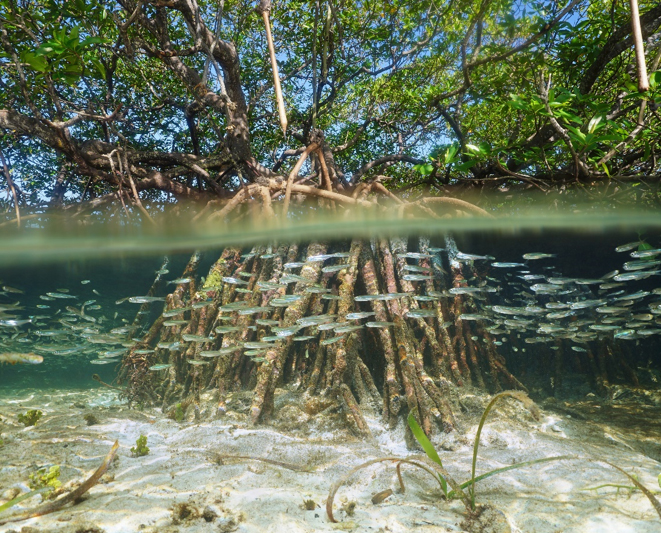
Mangroves may be one of nature’s best defenses against a changing climate
Mangroves are of two worlds. Found along about two-thirds of the planet’s tropical coastlines, these semi-aquatic plants constitute some of the most dynamic and biologically complex ecosystems on Earth. Like their roots, mangrove forests form intricate networks that bridge life between land and sea. And with their amazing capacity to store carbon, they might be one of nature’s best defenses against a changing climate. But they’re disappearing far too fast.
LOSING GROUND
With about 60 species in the mangrove family, these plants are an integral part of coastal, terrestrial, freshwater, and marine systems. Unfortunately, more than 35% of the world’s mangroves are already gone, cleared for agriculture or industry, or harvested for timber.
COAST TO COAST
Millions of people worldwide depend on coastal ecosystems for food and livelihoods. Mangroves keep these systems healthy, protecting resources—from fisheries to firewood—that support human populations.
BEAUTIFUL FOREST
The Sundarbans, or “beautiful forest” in the Bengali language, is the world’s largest mangrove ecosystem. Home to 4 million people in India and Bangladesh, the Sundarbans also harbor many rare and threatened species, including tigers that swim from mangrove island to mangrove island to hunt prey.
Leave a comment
You must be logged in to post a comment.